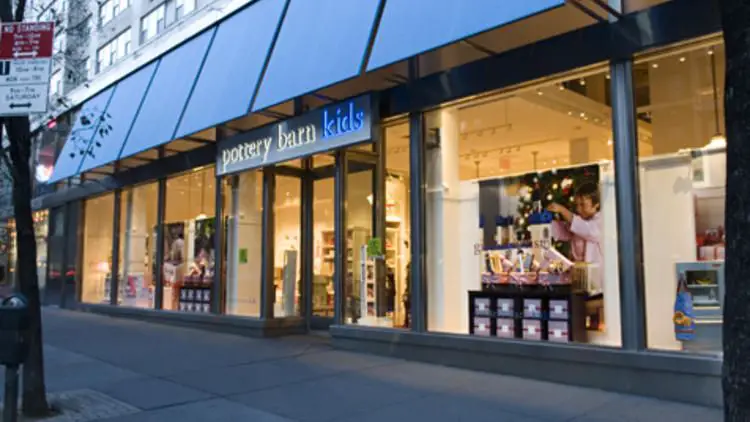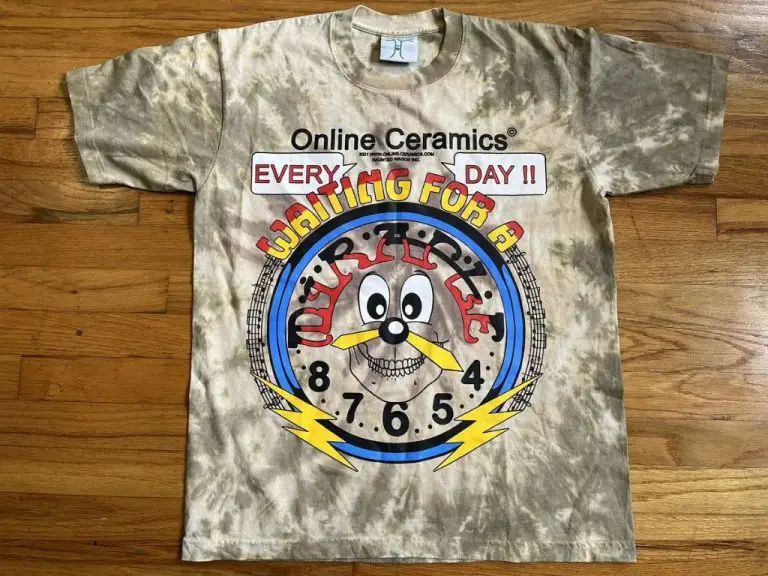How Tea Cups Are Made?
Tea cups have a long and rich history dating back thousands of years. The first tea cups were likely simple bowls made from clay, wood or bamboo used by ancient Chinese tea drinkers. Over time, tea drinking spread across Asia and into Europe, and the designs and materials used to make tea cups evolved and became more refined.
Today, most standard tea cups are still made from ceramic, but can also be made from glass, wood, plastic or metal. The basic manufacturing process involves selecting the materials, designing and making molds, forming the cup shapes, drying and firing the ceramics, decorating with glazes or paints, inspecting for quality, branding, and finally packaging for distribution.
Selecting Materials
The type of material used to make tea cups can greatly impact their durability, appearance, and cost. Here are some of the most common materials used:
Porcelain
Porcelain is a fine, white ceramic made from clay and other minerals fired at very high temperatures. It is known for its smooth, glass-like surface and delicate translucency. Porcelain is one of the most common materials used for tea cups due to its durability and ability to retain heat well. The high firing temperature makes it resistant to stains and chipping.
Bone China
Bone china contains bone ash as an ingredient, typically 25-50% bone ash by volume. The bone ash gives it a bright white color and slightly translucent quality. Bone china is lightweight yet strong, and has high resistance to chipping. It’s an ideal material for delicate tea cups and saucers.
Stoneware
Stoneware is a dense type of pottery made from clay and fired at high temperatures. It comes in a variety of colors and finishes. Stoneware has excellent thermal properties to retain heat. It’s heavier than porcelain but highly durable and resistant to chipping. Stoneware mugs are popular for more rustic styles.
Glass
Glass tea cups provide a contemporary look. They can be made from different types of glass such as borosilicate or soda-lime glass. Glass allows tea colors to shine and is transparent to showcase interior design. It’s also microwave safe. However, glass can crack or shatter if dropped, so it requires careful handling.
Design and Mold Making
The design of the tea cup is an important first step in the manufacturing process. Experienced designers will consider the cup’s intended use, ergonomics, aesthetics, and manufacturing requirements when creating their design. Key design decisions include the shape and size of the cup, the thickness and curvature of the walls, the size and shape of the handle, and decorative elements.
Once the design is complete, a mold must be made to form the cup. The mold is usually made of plaster or metal and formed into the inverse shape of the cup design. Complex molds may be made from multiple pieces that are assembled together. The mold may include ridges and perforations to add texture and detail to the finished cup.
Mold making is a skilled process. The mold material must be built up layer by layer and shaped using specialized tools. The mold maker must ensure the mold has the proper draft angles so the finished cup can be easily removed after forming. Vents may be added to allow air to escape during the forming process. The mold is allowed to fully cure and dry before it is ready for use in cup manufacturing.
Forming the Cup
Once the molds have been created, the next step is forming the actual teacup using one of several techniques:
Slip Casting
Slip casting is one of the most common methods. A liquid clay slip is poured into a pliable plaster mold. The plaster absorbs the water from the slip, forming a layer of hardened clay on the mold walls. Once it reaches the desired thickness, the excess slip is poured out, leaving the clay cup shell behind.
Jiggering
In jiggering, a rotating mold is clamped to a wheel and a profile tool shapes the interior of the teacup. Then another tool presses the exterior into shape against the mold. Jiggering produces thinner and more uniform walls.
Pressing
Pressing uses solid clay pressed between two molds to form the cup shape. The clay is rolled into sheets, cut to size, and compressed between the molds under high pressure.
Blowing
Blowing is less common for cups, but can be used. It involves inflating molten glass or clay with air pressure through a tube into a molded shape.
These various forming techniques allow manufacturers to create teacups in different styles, thicknesses, and qualities to suit different needs.
Drying and Firing
After the tea cup has been formed into its final shape, it contains a high amount of moisture from the clay. To remove this moisture, the cups are placed in a temperature-controlled dryer and slowly dried over the course of several hours or days. The process must be done carefully to avoid cracking or warping the cup as the moisture evaporates.
Once fully dried, the tea cups are moved into the kiln for firing. The kiln heats the cups to extremely high temperatures, usually around 2,200°F or more. At these extreme temperatures, chemical transformations occur within the clay that permanently harden and strengthen it into a ceramic material. The firing process may take over 24 hours to complete for fine porcelain cups. The cups must be cooled slowly after firing to prevent damaging stresses from developing.
Proper drying and high temperature firing are essential processes in creating a strong, hardened tea cup ready for glazing and use.
Glazing
Glazing is an important step in creating beautiful and functional tea cups. After the bisque ware has been fired, it is ready to have decorative glazes and colors applied. Glazes serve both decorative and functional purposes – they make the cup pretty to look at, but also make it non-porous and waterproof.
Glazes are made from mixtures of mineral ingredients like silica, borax, and feldspar suspended in water. The glaze recipe determines the final look, feel, and properties of the glazed surface. Glaze colors come from metal oxide pigments like cobalt (blue), copper (green), iron (brown), and manganese (purple).
Applying glazes can be done in many ways, like brushing, dipping, pouring, or spraying. The bisque ware cups are loaded onto kiln shelves, and the liquid glaze is applied to the outside surface and sometimes the interior as well. The cups are then fired in a kiln at high temperatures around 2200°F-2400°F to melt the glaze ingredients and fuse them to the clay body. Firing fuses the glaze into a smooth, glassy coating.
Glazing allows for lots of creativity in applying decorative colors and finishes like crackles, drips, and textures. Multicolor glazes or hand-painted designs make each piece unique. The final glazed tea cup is left with a beautiful glossy surface ready for use.
Quality Inspection
Once the tea cups have been glazed and fired, they undergo a thorough quality inspection process to check for any defects or flaws before being approved for branding and packaging. Trained inspectors carefully examine each tea cup by hand and visually inspect the glaze, shape, weight, color consistency, and overall quality. Some key aspects they look for include:
- Checking for cracks, chips, dents, or other damage
- Verifying the handle is sturdy and attached properly
- Making sure the rim and foot of the cup are smooth and even
- Confirming consistent wall thickness without thin spots
- Looking for pinholes or bubbles in the glaze
- Checking that decorative patterns are sharp and cleanly applied
- Ensuring the bottom is flat so the cup sits level
- Testing capacity matches specifications
- Validating appropriate weight and sturdiness
- Reviewing color uniformity if multiple cups are in a set
Any tea cups that fail to pass inspection are removed and either discarded or set aside to be reworked. Only tea cups meeting quality standards move on for packaging and sale. This careful inspection process ensures all manufactured tea cups meet specifications and will provide an enjoyable drinking experience for the end consumer.
Branding and Packaging
Once the tea cups have been inspected for quality, they are ready for branding and packaging. Most tea cup manufacturers will have relationships with different brands to produce cups branded with their logos and designs. The application of logos and designs is done through screen printing, decals, or embossing.
For screen printing, the logo or design is digitally rendered and then a silkscreen stencil is created. Each color in the design requires a separate screen. The cups are printed by squeezing ink through the silkscreen onto the cup. The ink dries quickly, allowing efficient mass production. Screen printing allows for vibrant, crisp logos and designs.
Decals with the logo or design are also applied to the finished cups. The decals are wet-transferred onto the cup and then fired at a low temperature to fuse them permanently to the surface. Decals allow for detailed and colorful logos.
Embossing presses the logo or design into the cup for a raised 3D effect. This is done by an embossing machine that applies high pressure to imprint the image. Embossing creates an elegant, understated logo effect.
Once branded, the tea cups are packaged for retail or wholesale distribution. Cups are generally wrapped in tissue paper and placed in branded boxes. Luxury cups may be placed in gift boxes or bags. The packaging aims to protect the cups in transit and present them attractively on store shelves or for gifting.
Distribution
Once the tea cups have been through quality inspection and packaged, they are ready to be distributed to stores and consumers. The distribution process involves several steps:
Warehousing – The packaged tea cups are transported from the manufacturing facility to a warehouse for storage until they are ready to be shipped out. Large warehouse facilities allow manufacturers to stockpile inventory until needed.
Fulfillment – When an order comes in from a retail store or distributor, the requested number of tea cup units are pulled from the warehouse inventory. The order is checked for accuracy and then prepared for shipping.
Transportation – The packaged tea cups are loaded onto pallets and then into trucks, trains or ships for transportation. The logistics of choosing the shipping method depends on the destination, cost and speed requirements.
Delivery – The tea cups are finally delivered to retail stores, where they are unloaded, put on display shelves, and made available for purchase by consumers. Online stores may ship individual orders directly to customers.
Restocking – As store inventory depletes, new orders are placed with the manufacturer to replenish stock. The distribution cycle continues with new production output.
Efficient distribution channels allow tea cup manufacturers to quickly fulfill orders and ensure shelves remain stocked with their products.
Conclusion
The process of making a tea cup involves many steps, but begins with carefully selecting and preparing the right materials. Clay bodies are specially formulated for aesthetics, durability and heat resistance. Designs are brought to life through mold making. Skilled artisans shape the soft clay on a potter’s wheel or into plaster molds by hand. The formed cups undergo a drying period to remove moisture before firing at extremely high temperatures in a kiln. This hardens and strengthens the clay permanently into ceramic. Many cups receive decorative glazes or ornamentation before a final firing. Each cup passes through quality control checks before packaging and distribution. There’s an incredible art and science behind such a seemingly ordinary item as the tea cup.
Interesting facts include the special techniques like slip casting and jiggering used for mass production while still using traditional materials like porcelain. Trends for the future point to more advances in ceramic technology, novel shapes and designs, use of 3D printing and customization, plus sustainable and eco-friendly manufacturing.
Overall, the tea cup’s long history and perseverance as a household staple stems from both its beautiful handmade craftsmanship and its perfect functional shape. No tea time is complete without that satisfying clink of porcelain and sipping from a well-crafted cup.




